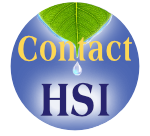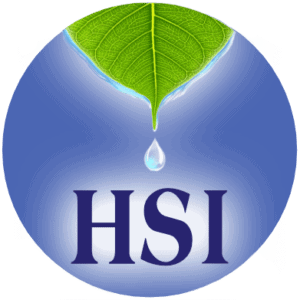Eva Lipton-Ormand, CHom.
Imagine a time when science as we know it did not exist. Religious men, women and natural philosophers sought their answers to questions about heaven and earth according to the precepts of what their Creator revealed to them through nature. In those days, the shape and color of a plant was associated with healing an organ of similar shape or color. For example, a plant with yellow flowers or sap, like celandine (Chelidonium majus), was attributed the power to heal the liver and gallbladder because of the yellow color of bile. Heart-shaped plants such as foxglove (Digitalis purpurea) were used for heart conditions.
This method of healing referred to as the Doctrine of Signatures, was formulated by Paracelsus. A number of plants were in fact proven efficacious for certain ailments and have even been incorporated in modern prescription drugs, and others were not. Today’s health food store aisles are packed with tinctures, supplements, herbal preparations, and essential oils. This demonstrates a demand for a natural approach to healing and a trust in the wisdom of herbal tradition.
We use teas and syrups, essential oils and bath supplements to recover from coughs and colds as well as many aches and pains. We long for the calming effect of a chamomile tea after a hard day at the office, or the tummy soothing goodness of a cup of peppermint tea. When a child has erroneously ingested something poisonous, we are grateful for the bottle of ipecac syrup to induce vomiting.
Homeopaths have collected information about the effects of plants, minerals and animal substances, compiled it in the homeopathic Materia Medica, since the 18th century. Historical poisoning reports going back to the time of Socrates, who was poisoned with hemlock (Conium maculatum) were added to this vast body of information. European royalty read on …. known for their use of lethal substances, like arsenic, to rid themselves of their adversaries contributed greatly to the knowledge about poisonous materials. From the 17th century until 1910 highly toxic mercury was used to treat Syphilis. The severe poisoning symptoms of mercury became evident, in a much milder form still known to be caused by Amalgam fillings. When mercury was later replaced by Salvarsan, a synthesized arsenical compound, its side effects added to the knowledge about the destructive effects of arsenic.
Samuel Hahnemann, the founder of homeopathy, aware of the toxic effects of medicines, was looking for harmless medicines. In 1779, he started testing a number of substances in a diluted non-toxic form. When he realized that a substance causing a set of symptoms could also cure the same symptoms, the system of homeopathy was born.
In keeping with the homeopathic concept that “like cures like,” homeopaths were first in conducting drug tests. Homeopathic drug tests are called provings and continue into our time. Provings (https://www.homeopathyschool.org/hsi-research/) are controlled trials of homeopathic remedies that allow homeopaths to observe and record the symptoms each remedy can cause in a healthy individual. The remedy that lists similar symptoms as those experienced by a person suffering from an illness will be most effective in curing the illness.
Let’s take that syrup of ipecac: we know it produces nausea followed by vomiting. Ipecac as a homeopathic remedy (Ipecacuanha) can be a great relief for the vomiting and nausea that happens with food poisoning, stomach flus, or pregnancy. There are numerous homeopathic remedies, which can alleviate nausea and vomiting. In order to use the most effective remedy (“cure like with like”) homeopaths must choose a remedy that matches as many symptoms of the ill person as possible. In the proper application of homeopathic Ipecacuanha, the ailing individual’s symptoms should include persistent nausea that is made better by nothing and general sensitivity to everything from light and noise to cold and heat. An important symptom that would confirm Ipecacuanha as the most effective remedy is, that in spite constant nausea, the patient has a remarkably clean looking tongue.
The central idea of homeopathy is curing the person experiencing a disease, not curing the disease isolated from the person. Homeopathy aims at improving all of levels of human experience: mental, emotional and physical.
Let’s get back to that chamomile tea. This plant contains volatile oils such as bisabolol, bisabolol oxides A and B, matricin, as well as flavonoids, particularly a compound called apinegin. In its herbal form, chamomile aids muscle relaxation, digestive issues, allergies, inflammatory responses, skin issues and more.
Homeopathic Chamomilla has similar applications and is also known as one of the key remedies for children with intense irritation during ear infections and teething pains.
Homeopathic treatment has to be very specific about the individual’s symptoms, mental/emotional as well as physical symptoms. If Chamomilla is indicated, aside from having an earache or colic, the child will have one red and hot cheek and one that is pale and cool. The child needing this remedy will also be angry, violent and dissatisfied, demanding to be carried around, from which it feels better. With cold applications the child feels better and hot applications will make things worse, and most of all, the child is super sensitive to pain.
When the well-indicated remedy is given, the speed and efficacy of homeopathic treatment is remarkable. In acute cases, such as vomiting or earache, you could see positive results within the first fifteen to thirty minutes. The best part of homeopathy is that it does not have any toxic side effects. In herbal treatment plants or parts of plants are used as substances. Homeopathic remedies are produced from the crude substance of plants, minerals and animals, but through a process of a systemized dilution they are made into a medicine that has no substance left and has a purely energetic effect. Rather than addressing a particular physical condition, homeopathic remedies strengthen the immune system as a whole so that the body can fight off symptoms.

